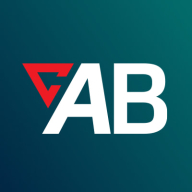

ActiveBatch by Redwood and Temporal compete in the field of automation and workflow orchestration. ActiveBatch has the upper hand in versatility and integration capabilities, making it a comprehensive solution for various IT processes.
Features: ActiveBatch offers robust features like monitoring job status, customizable scripting for task automation, and seamless integration with different systems. It effectively manages large volumes and enables automation of file transfers and database queries. Temporal focuses on developers with its workflow orchestration prowess, handling complex workflows and distributed transactions. It provides reliability and integrates well with existing tech stacks, making it ideal for microservice environments.
Room for Improvement: ActiveBatch can be complex for new users, requiring improved documentation and enhanced UI. It also needs better support for cloud integrations. Temporal's challenges lie in its complex terminology and limited documentation, alongside the absence of built-in data storage and unrefined visualization tools.
Ease of Deployment and Customer Service: Both ActiveBatch and Temporal offer flexible deployment options, including on-premises and cloud solutions. ActiveBatch users report mixed experiences with customer service, noting inconsistent support personnel knowledge. Temporal is praised for its fast and effective support, though it relies on additional deployments like AWS, which makes it more developer-friendly.
Pricing and ROI: ActiveBatch typically involves licensing costs with additional fees for specific integrations but is seen as offering good value for its comprehensive features and the operational efficiencies it brings. Temporal, being open-source, offers cost-effectiveness without licensing fees, although infrastructure costs can be significant. It provides flexibility and reliability, with potential indirect costs for custom workflow implementation related to infrastructure and maintenance.


ActiveBatch by Redwood automates and manages batch processes, data integration tasks, and workflow scheduling. It's used for file transfers, data processing, server monitoring, and report generation, supporting both on-prem and cloud environments.
Organizations implement ActiveBatch by Redwood to automate complex job scheduling and data workflows, integrating seamlessly with FTP, SQL, PowerShell, and other systems. With features like real-time monitoring, error handling, and centralized management, users can significantly boost productivity while minimizing manual intervention. Its flexibility in supporting on-premises and cloud environments makes it adaptable for diverse IT landscapes. The tool simplifies workflow orchestration with an extensive library of pre-built steps and robust API integrations, ensuring efficiency in handling various workloads.
What are ActiveBatch by Redwood's key features?In various industries, ActiveBatch by Redwood is used to streamline operations, whether in finance handling large-scale data processing, healthcare managing patient records, or retail optimizing supply chains. It addresses specific needs by offering robust automation, efficient job scheduling, and seamless integration with existing systems, driving operational excellence and efficiency.
Temporal automates and manages workflows efficiently, offering resilience in distributed systems with features like retry and fault tolerance. Its capabilities in handling complex workflows and integrating with programming languages make it a valuable tool for managing diverse business logic.
Temporal excels in workflow orchestration, automating tasks across multiple platforms, and ensuring durability in asynchronous operations. It supports long-running workflows and simplifies handling distributed transactions, reducing boilerplate code. Temporal is noted for its durable execution and built-in retry policies, enhancing resilience. Despite its complexity and steep learning curve, it is valued for its integration with popular programming languages and relatively easy setup process, though it requires improvements in user-friendly features, documentation, community support, and security.
What are Temporal's key features?Temporal is implemented in sectors requiring robust workflow orchestration, such as managing data pipelines, API integration, and scheduling tasks. Organizations in a Kubernetes environment leverage it for its scalability and infrastructure management capabilities, securing integrations and enhancing reliability across IT operations.
We monitor all Process Automation reviews to prevent fraudulent reviews and keep review quality high. We do not post reviews by company employees or direct competitors. We validate each review for authenticity via cross-reference with LinkedIn, and personal follow-up with the reviewer when necessary.